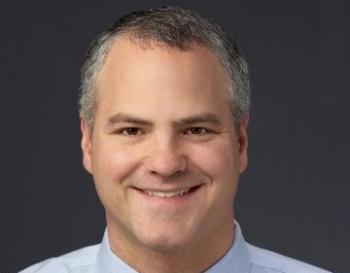Image Caption
Summary
Local Journalism Initiative Reporter
Windspeaker.com
A report released last month by MNP and ATB Financial draws a single conclusion: Indigenous people in Alberta are already valuable contributors to the economy, but with the right support, that contribution could increase.
Clayton Norris, vice president of Indigenous services for the national accounting, tax and business consulting firm of MNP, says he always knew that. But helping to author the report, Opening the Door to Opportunity: Reporting on the Economic Contribution of Indigenous Peoples in Alberta, put it all in perspective.
“I've been doing this for 20 years and I was surprised to find when we aggregated the data it just grew and grew and grew, and we based it in actual financials that were publicly available,” said Norris, who three years ago became a status member with the Cold Lake First Nation.
The data comes from 2019. Sources include the Alberta government, various federal departments, First Nation financial statements published through the First Nations Financial Transparency Act, the Métis Nation of Alberta, the Métis Settlements General Council, Alberta Assembly of First Nations and a number of Indigenous business associations.
Those figures show, among other factors, that the Indigenous economy in Alberta generated $6.74 billion of gross domestic product (GDP), equal to the GDP generated by the province’s agricultural sector.
The Indigenous economy’s GDP accounted for two per cent of the provincial GDP.
This is the first such report done specifically focusing on the Alberta economy.
While the dollar figures and percentages are impressive, Norris wants readers to understand that the report goes beyond the numbers.
“I think when we look at the findings of the report, the diversity of the businesses that are out there, in almost every single industry, there’s almost a story to be told in every single number. When you look at the distribution of income of businesses, it’s really high in one area and really low in another. Why is that? Is there an opportunity there?” said Norris.
He believes the report is “for many purposes… (and) for all Albertans.”
For governments at all levels, he says, it’s to understand the economic impact of Indigenous peoples in Alberta right now.
For industry, it’s to understand the demographics of growing communities and the opportunities this presents.
“For the nations themselves (it’s) knowing there's been some real successes out there,” said Norris.
But just as important, he says, are the gaps the report highlights.
The average income of an Indigenous person in Alberta is $44,232 compared to the $63,853 for the non-Indigenous population. The employment rate for Indigenous people sits at 55 per cent. With approximately 544,000 businesses in the province, fewer than 3,100 are Indigenous-owned.
According to the report, narrowing the gap in income by supporting between 11,500 and 14,000 jobs could generate between $2.5 billion and $3 billion, with more spending per Indigenous household and the majority of that spending done in non-Indigenous communities. This increase in Indigenous revenue would in turn generate annual tax revenues of between $500 million and $600 million.
While the report points out where gaps exist and the significance of those gaps in dollar figures, it doesn’t offer solutions.
“We focused on the economic impact, but I would definitely say additional investments in all those areas—health, education, infrastructure, housing—is going to be required before that gap can be narrowed. Because people struggling to find all of those things aren’t going to be looking at the opportunities they're going to have if they're not getting their basic needs met,” said Norris.
Because such a wide range of monetary and human resource investments are required, Norris sees narrowing that gap as the responsibility of a wide range of players, including federal, provincial and municipal governments, industry, and Indigenous governments.
“Everybody’s got something to contribute,” he said, including MNP.
According to the report, MNP has a dedicated team of 300 professionals who work with more than 250 Indigenous nations and over 800 clients.
ATB, which partnered on the report, has committed to providing access to capital. It has also created an Indigenous financial services team in meeting Calls to Action 92 from the Truth and Reconciliation Commission on the legacy of residential schools.
“We look at it from what we do, accounting, tax, and consulting. Let’s support those things but what we do can’t be successful on its own. We need the educators, we need the health, we need the infrastructure in communities in terms of housing and opportunities for businesses to be created. We need the government programs to support it,” said Norris.
“We’re talking about all of the economic impacts, but none of that gets done without healthy, safe, vibrant communities. Until we get further into investments in all of those things … we’re not going to achieve any economic opportunities or any economic reconciliation until the bare needs are met.”
Support is needed even more now. The measures to control the coronavirus pandemic have had a big impact on Indigenous communities, says Norris. With schools going on-line and connectivity poor on many reserves, Indigenous students didn’t fare as well their non-Indigenous counterparts.
“There’s a big asterisk on the 2019 numbers as we wait to see what the true impacts COVID has had,” said Norris.
Read the report at https://www.indigenouseconomicimpact.ca/
Local Journalism Initiative Reporters are supported by a financial contribution made by the Government of Canada.

